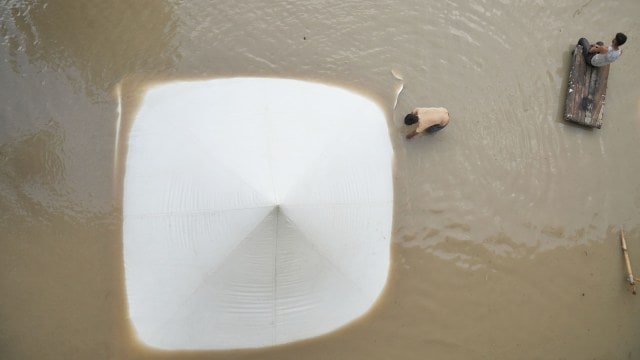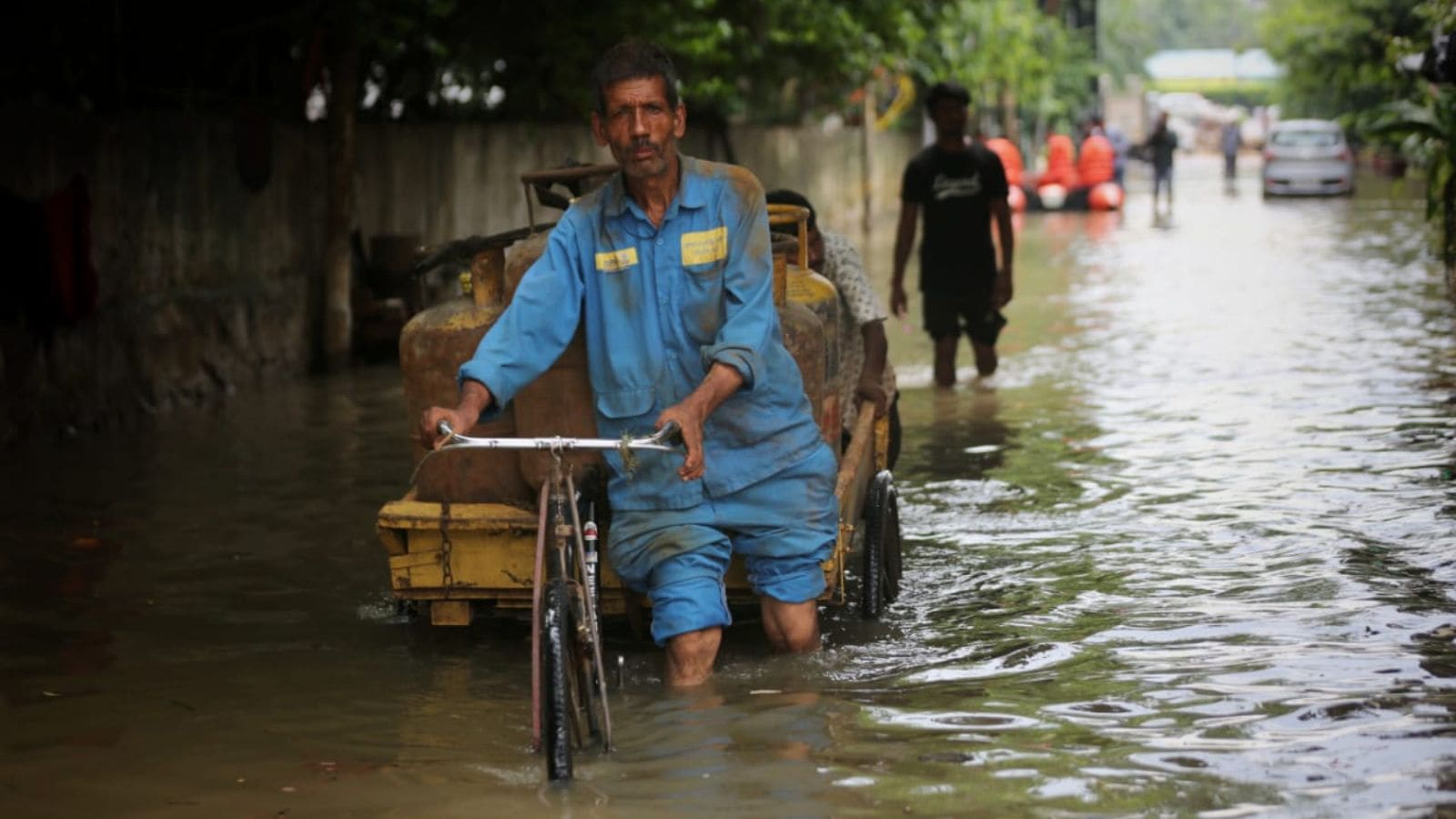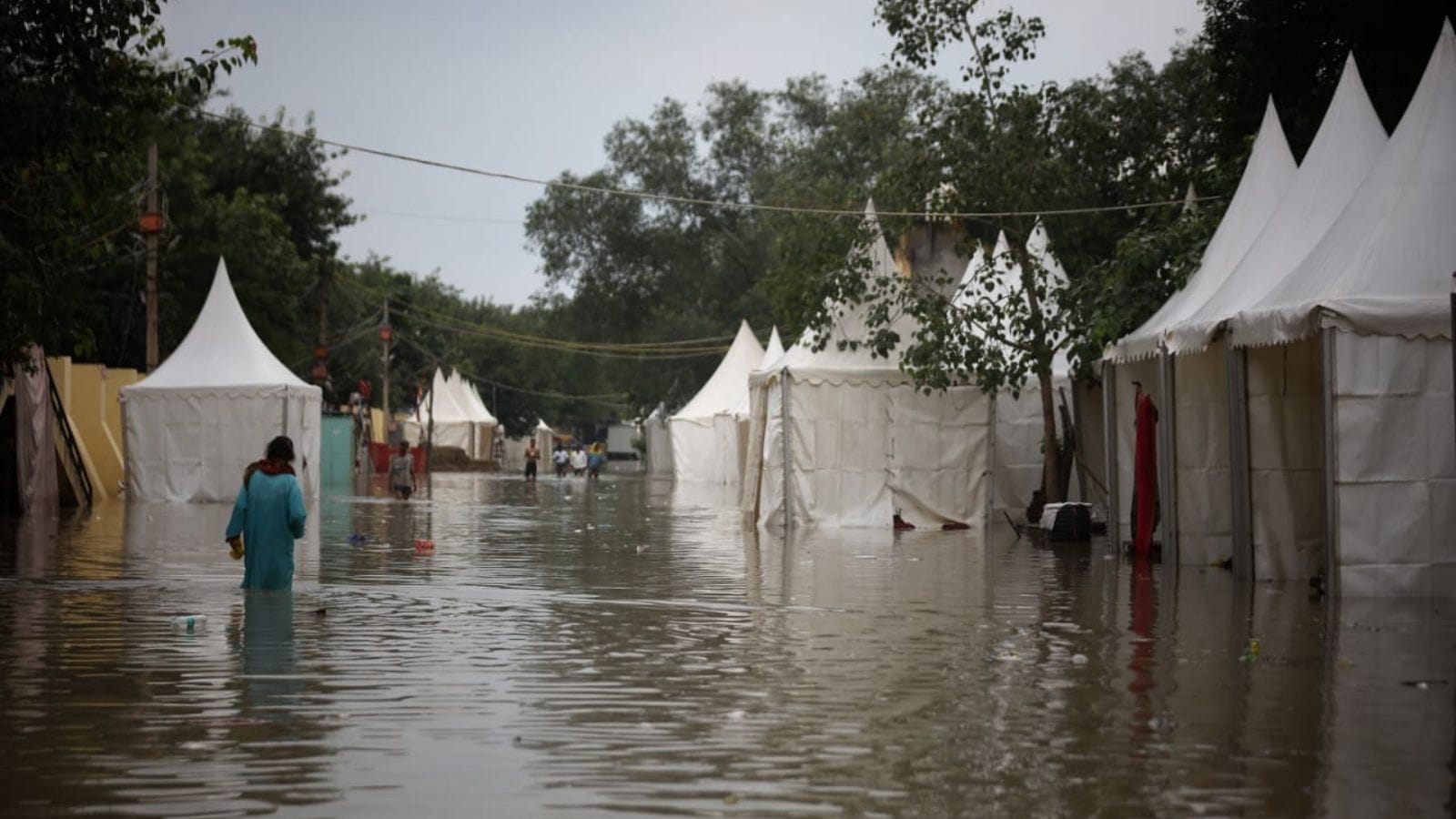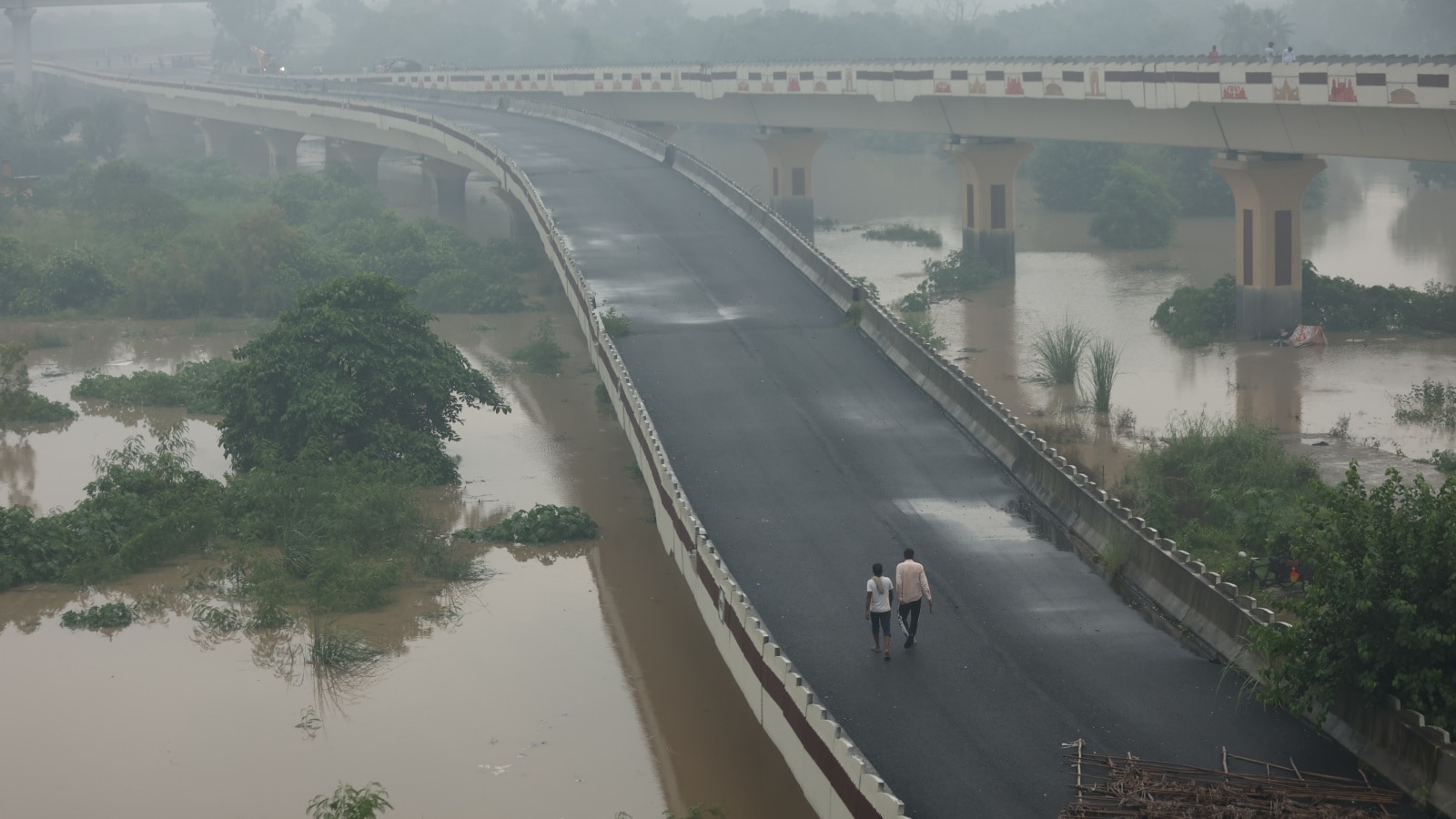‘Thoda aur andhera ho jaaye, tab jaate hain…’: Displaced by Yamuna floods, families in relief camps struggle for food, water — and toilets
As Yamuna floodwaters crept deeper into neighbourhoods, women struggling due to a lack of toilets at makeshift tents is not the only issue.
 A relief tent near Mayur Vihar Phase 1 was submerged by the floodwaters. (Express photo by Abhinav Saha)
A relief tent near Mayur Vihar Phase 1 was submerged by the floodwaters. (Express photo by Abhinav Saha)“Thoda aur andhera ho jaye, tab jaate hain (Let’s wait for it to get darker, then we will go),” Soni told her 17-year-old daughter at a relief camp in Mayur Vihar on Thursday evening.
With no functional toilet nearby, for the last 10 days, Soni, her two daughters and her sister-in-law Muskan — who is seven months pregnant — have set out at 3-4 am to go to the banks of a rising Yamuna river or under a flyover to relieve themselves.
Pointing at the traffic jam next to the Mayur Vihar Metro station, Soni said, “Look how many vehicles are passing by. There are also many people near the river. How will we go now?”
As Yamuna floodwaters crept deeper into neighbourhoods, women struggling due to a lack of toilets at makeshift tents is not the only issue. Many families, who have taken shelter in the over 500 tents installed across at least 38 locations in six flood-prone districts, also complained of scarce drinking water, food and overcrowding.
“I had to walk 30 minutes to Shastri Park to use the toilet. There is no drinking water here either,” said Chanda (30), seated on a chair on the roadside at Old Usmanpur. The area is covered with dung with cattle belonging to those displaced tied on the roadside
When asked, officials from the district administration said portable mobile toilets are being set up at the camps.
 People wade through the leftovers of a relief shelter which was flooded in the Yamuna Bazar in New Delhi on Thursday. (Express Photo by Tashi Tobgyal)
People wade through the leftovers of a relief shelter which was flooded in the Yamuna Bazar in New Delhi on Thursday. (Express Photo by Tashi Tobgyal)
On Thursday evening, teams from Delhi Fire Services were still ferrying residents from partially submerged houses in the area.
Ganesh Kumar, a 50-year-old ragpicker, was rescued with two roommates. “We didn’t expect water to reach this high. We tried moving our things to higher platforms, but by night, the water had surrounded us. We stayed on the roof until the boat came,” he said.
In Mayur Vihar Phase I and Yamuna Bazar, floodwater has entered tents, compounding the misery of those displaced.
The Old Iron Bridge, meanwhile, was abuzz with activity. Currently closed for traffic, it is now a shelter for nearly 300 rescued cows from a gaushala, which was submerged by the floodwaters.
The rescue resembled the chaotic Jalikattu sport — at least 10 men in groups shouted as they tried to control a cow, pulling its horns with rope before loading it onto a motorboat. The rescue, conducted over two days, ended by safely transporting the cows to the bridge.
 A flooded Yamuna Bazar in New Delhi on Thursday. Express Photo by Tashi Tobgyal
A flooded Yamuna Bazar in New Delhi on Thursday. Express Photo by Tashi Tobgyal
Veterinary staff Sakruddin Sheikh, who has been tending to the cattle at the gaushala for a decade, said, “We managed to bring about 300 cows here. Medicines and food are being provided to prevent hypothermia and help them acclimatise.”
Amid this, Maya Devi, who has taken shelter on the roadside, complained of overcrowding at the camps. “There are no tents for us…”
Another woman added, “We neither have a place to stay nor food to eat.”
When asked, a police officer said rain had delayed the setting up of tents at the site, and food was first being provided at the Shastri Park relief camp.
Rescues have also sparked quarrels. With each rescue boat carrying only 8 to 10 people, officials are struggling to maintain order. At Mayur Vihar, Patparganj MLA Ravinder Singh Negi was seen repeatedly urging residents not to crowd riverbanks, even as NGO workers demanded priority to rescue stranded dogs.
The scene at the city’s largest cremation ground, Nigambodh Ghat, was no better, as it continued to remain under water. Water from Yamuna had entered the ghat after a part of a 8-ft boundary wall collapsed on Wednesday.
 A flooded stretch in New Delhi. Tashi Tobgyal
A flooded stretch in New Delhi. Tashi Tobgyal
Despite the MCD announcing that cremations have been suspended, families continued to carry their dead to the half-submerged cremation ground.
Jatin Rajput (23) had come from Pratap Nagar to cremate his 50-year-old relative. “Our family always comes here for the last rites… We are now thinking of going to Punjabi Bagh,” he said.
During the 2023 floods, the ghat was shut for nearly a week, recalled Afdesh Sharma, the ghat in-charge. “Three tractors have been put in place to pump out water… hundreds of cement bags are being used to prevent further flooding,” he added.
Other ghats in the city, too, have been hit. At the cremation ground in Geeta Colony, platforms were fully submerged. Still, some cremations took place. Sanjay Sharma, the ghat in-charge, said, “Around 14 cremations took place… families used the narrow pathways to perform rituals.”
“This is not just about infrastructure, it is about dignity in death… But, what can we do… nature has taken its course,” said Shankar Kumar Ranga, a member of Nigambodh Sanchalan Samiti.







